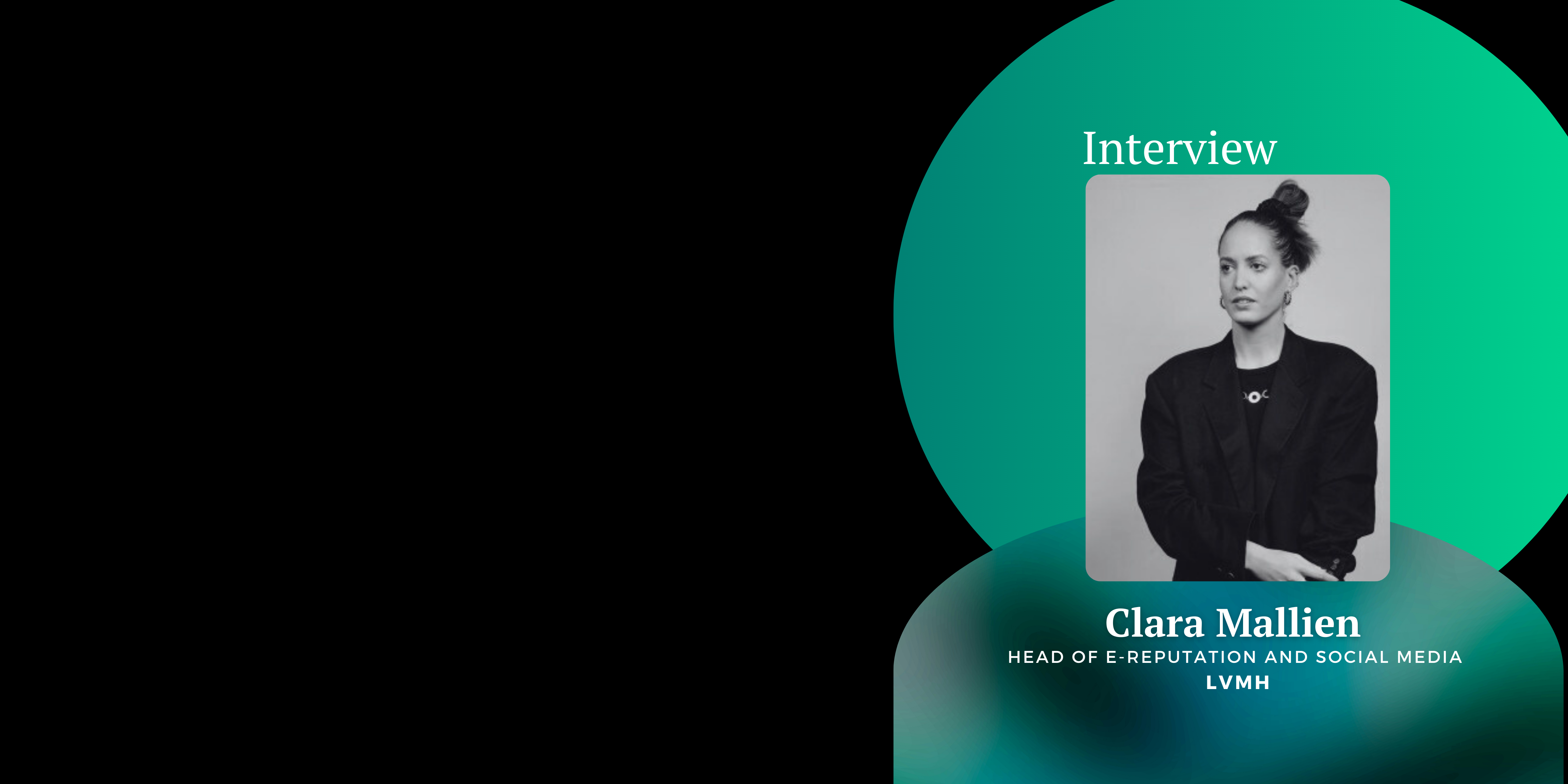Reputation Management
Effortlessly and accurately track the web and social network impact of your brand
Retour
Solutions
Reputation
Reputation Management
Effortlessly and accurately track the web and social network impact of your brand
Crisis Communication
Prepare, manage, and respond effectively to crises on social media and beyond
Leadership Advocacy
Amplify your leaders' voices to build trust and influence across key audiences
Influence
Trend Research
Uncover emerging trends to keep your brand ahead of the curve
Identifying Influencers
Find the voices that matter most to your audience and align with your brand goals
Campaign Tracking
Monitor, measure, and optimise your campaigns in real-time for maximum impact
Strategy
Competitive Intelligence
Gain actionable insights into your competitors’ strategies and performance
Industry Insights
Stay informed with real-time analysis of your industry’s landscape and shifts
Cyber Threat & OSINT
Detect and mitigate cyber threats with cutting-edge open-source intelligence
Retour
Why Visibrain
Why Visibrain
Our Coverage
The best coverage across the web and social networks
Our Technology
Our intuitive interface uses cutting-edge technology
Our Support
Our team is with you every step of the way
Featured
The A to Z of Social Listening

Read our white paper
Retour
Clients
Our clients
Brands
Visibrain for brands
Institutions & Local Authorities
Visibrain for institutions and local authorities
Agencies
Visibrain for agencies
Our Last Study
The A to Z of Social Listening

Read our white paper
Retour
Resources
Resources
Blog
Stay up to date
White Papers
Studies, industry analysis and advanced insights
Case studies
Our client stories
Help center
Guides and resources for users
Newsletter
Stay up to date with the latest Visibrain news!
Our Last Study
The A to Z of Social Listening

Read the full article
Retour
About

Expert Opinions
06/02/2025

Sophie von Mensenkampff
Content Manager
Social media is redefining the luxury landscape. From TikTok to Instagram and LinkedIn, these platforms enable luxury groups and fashion houses to connect with a wider audience. But which platforms should they use? How can they translate the essence of luxury into social media trends? And how can data be leveraged for brand monitoring?
To answer these questions, we spoke with Clara Mallien, Head of E-reputation & Social Media at LVMH.
Luxury brands and groups have significantly invested in social media in recent years—not just on traditional platforms like Instagram but also on TikTok. I believe they have successfully reached a younger audience while maintaining their prestige. Nearly all luxury brands are now active on at least one platform, boasting strong followings and high engagement rates.
Luxury is a topic that captivates internet users. While Instagram remains the top platform for brand engagement, luxury brands are expanding to other channels like TikTok, adopting its unique codes. Loewe, for example, has developed an exceptionally strong TikTok strategy that aligns perfectly with the platform’s DNA. This approach helps make the industry more accessible to Gen Z—and soon, Gen Alpha.
Constant monitoring of social media trends is essential to stay relevant and offer content that resonates with our communities’ expectations. We tailor the content we share on our platforms to current trends and best practices, particularly on TikTok, where the content tends to be the furthest from traditional luxury and corporate communication codes. However, the content we share on our channels must align with the overall communication strategy, not the other way around. The brand’s image and reputation come first.
At LVMH, we are active on eight platforms, including those in Asia. We firmly believe that corporate messaging can—and should—be adapted to each platform. While LinkedIn and Instagram are our primary audience hubs, our strategy is to differentiate our content and messaging across each channel. Beyond the unique identity of each social network, cultural and geographical nuances must also be considered. For example, the content we share on TikTok will never be the same as what we publish on WeChat.
At LVMH, our LinkedIn communication focuses on promoting employer branding and corporate news while showcasing our houses through the lens of our commitments. We firmly believe that sharing content about fashion shows, collections, and events on LinkedIn is relevant and contributes to our employer brand—provided the messaging is tailored to the platform and aligned with our audience’s expectations.
TikTok is a unique platform with its own codes and communities, quite different from traditional luxury standards. However, we firmly believe that a group like LVMH has a rightful place on it, and the growth statistics of our account confirm this. It is entirely possible to create viral content that aligns with TikTok’s DNA while maintaining a corporate dimension. Sharing the craftsmanship of our Maisons, highlighting our commitments, and showcasing the variety of roles within a group like LVMH—these are the things we focus on with content that is 100% conceived and created by our teams.
It has become impossible to implement and manage a social media strategy without data. We use various tools to analyse our performance and develop tailored strategies. Additionally, data helps us detect early signals that could lead to a reputational crisis or allows us to closely analyse crises and controversies that affect us. Relying on quantitative indicators in these situations often provides perspective and offers valuable points of comparison. Data is frequently a source of "reassurance" during a crisis, helping us make the most appropriate decisions.
Managing crises on social media starts with effective monitoring. If a controversy is not detected in time, it can quickly escalate into a major reputational crisis. Analyzing the situation, responding swiftly, and appropriately are key to crisis management.
I don’t believe it’s possible to rely on just one or a few indicators. Of course, we can look at the volume of mentions, reach, and engagement, but every crisis is unique and requires both quantitative and qualitative analysis. This is why I’m convinced that AI can never replace human analysis in a crisis situation. Mapping analysis is also an effective way to manage a crisis, as it provides a broader view of the communities involved and often confirms our intuitions.
Demo
Get your free demo
Get in touch with a member of our team for your own personalised demo
Get in touchNewsletter